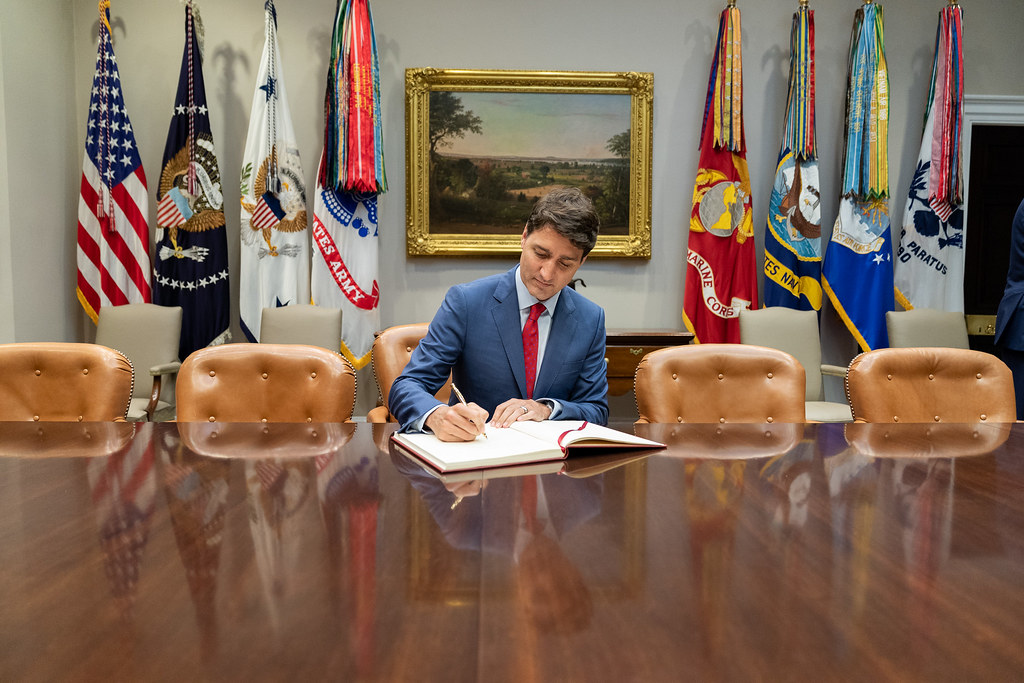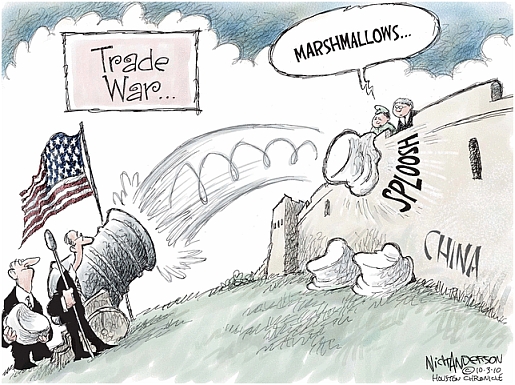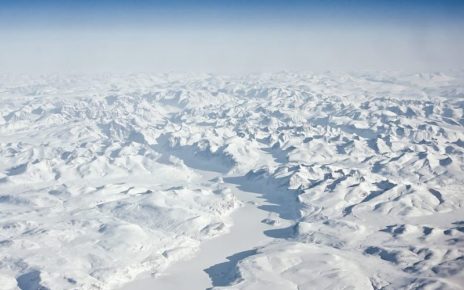This week’s G7 Summit has provided the international public with a glimpse into the absurdity and unorthodoxy of the times we live in. Perhaps more shocking is the normalcy by which we have come to observe the proceedings. Indeed, as the leaders of the world’s great powers met at Biarritz, on the coast of France, the adynata of nuking hurricanes and inviting Vladimir Putin to next year’s Miami summit were met with little more than raised eyebrows and tut-tutting sighs. It was only apt, that as the Amazon burned halfway across the world, the summiteers patted themselves on the back for rustling up a meagre $20 million USD in its defence – less than the cost of arranging the summit itself.
As the post-war order burns, set alight by both the willfully destructive and by the blissfully negligent alike, the G7 has become a fora for the new great power politics. It was Boris Johnson’s first major multilateral engagement as Prime Minister of Great Britain, auguring ill for the years ahead. As the world recovers from a sudden lurch to the far-right, the industrialised democracies of the G7 must grapple with the effects of latent nationalism and trade jingoism. Trumpian antics and Brexit alike are mere symptoms of this fundamental shift.
As Johnson aims to rip Great Britain from the European Union, regardless of the eventual form or consequences of such an arrangement, he will find himself turning to the United Kingdom’s traditional relationships to balance the deficit. Coupled with the Trump administration’s determination to identify and defeat China as a trade rival, there lies immense opportunity and difficulty for Canada in navigating the patterns of not-so-free trade in a more protectionist global economy.
This potential for both competition and cooperation in deft measure will rely on Canada’s ability to shrewdly exploit the openings of Brexit. Much like the post-war boom of the 1940s and 1950s, the rising star of Canada’s vast (and relatively nearby) resource base will be needed to fuel British industry as the latter seeks to move beyond the European continent. The difference this time being that Canada can leverage British economic desperation to its advantage in both trade and other realms of its national interest. Simply put, Canada will gladly benefit from separate deals with both the UK and the EU. As the clock ticks down towards Brexit, Great Britain will find that it does not share that same Canadian luxury of time and options.
To marshal the erraticism of this dynamic age, Canada would do well to utilize the established precepts of the North Atlantic Triangle. Identified by scholars of Canadian external relations in the 1940s, the North Atlantic Triangle is a theoretical concept that explains Canada’s dependence on both the United States and the United Kingdom. Its original purpose was to prevent Canada from becoming a physical battlefield in which British and American differences would be settled, as was the case in the War of 1812. Effectively managing the traditional relationship between the Atlantic centres of gravity is therefore key to Canada’s survival as a unified polity.
With greater Canadian independence from the British Empire came a trilateralization of this relationship, and fears of a direct American invasion largely subsided by the 20th century. Partnership in the form of NORAD, and participation in both the World Wars cemented Canada’s place as an actor of consideration in the US-UK “special relationship”. Now, Canada must seek to take its involvement one step further. For the first time in many years, attention (of both the good and bad variety) is being lavished on Canada by the British and the Americans. This attention must be leveraged to expand the frontiers of the North Atlantic Triangle to encompass the defence of Canada’s north from Russian encroachment, without enabling vassalization within our own strategic neighbourhood.
The North Atlantic Triangle maxim captures a foundational linguistic and cultural association that exists between these three nations. Political crosscurrents have often seen similar thinking prevail simultaneously at each end of the Triangle. The concurrent occupants of 10 Downing, 24 Sussex, and the White House tend to reflect notions of Western leadership and the future direction of the Anglo-American world. Such famous troikas include the war helm of Churchill, King, and Roosevelt, or the free-marketeering Toryism of Thatcher, Mulroney, and Reagan. The ‘third way’ optimism of the 1990s saw the rise of Blair, Chrétien, and Clinton. With the Trump-Johnson axis in full bloom, the next year will see significant developments across the North Atlantic Triangle system.
The Canadian federal election of the autumn, the 2020 Presidential election, and the ongoing Brexit dogfight all contribute to a feeling of epochal uncertainty and protean flux. Each has the potential to engender new iterations of an old North Atlantic pattern of synchronization. Will Scheer join Trump and Johnson in the delicate dance of machteconomik? Or will a progressive left alliance of Sanders, Corbyn, and Singh upend a sickly neoliberal world order? The convergence or divergence of Canada’s policy prerogatives for the next half-decade will depend on the three outcomes of the 2019-2020 political cycle.
With Canada facing Chinese pressure to its Pacific flank, and a Russian threat to its North, it would do well to return to a formula of understanding with its two closest and most powerful allies. There are many mechanisms, including NATO and the G7, by which the theory of the North Atlantic Triangle can find real-world application. Should North Atlantic harmony run aground in the stormy waters of dissonance, a geographically removed Canada may very well become alone in an increasingly hostile world. The next Prime Minister, whoever it may be, would do well to consider the reality of Canada’s plight – lest we find ourselves with Greenland as our only close neighbour and confidante. And with Trump’s eye for real estate, even that sole solace may not last much longer.
Featured Image: Canadian Prime Minister Justin Trudeau signs the guest book in the Roosevelt Room of the White House Thursday, June 20, 2019. (Official White House Photo by Shealah Craighead) via Flickr.
Disclaimer: Any views or opinions expressed in articles are solely those of the authors and do not necessarily represent the views of the NATO Association of Canada.




